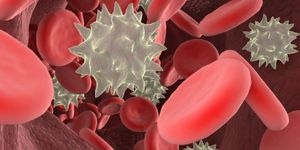It’s been known for a while that plaques of the protein amyloid beta are part of the pathology of Alzheimer’s disease. Multiple studies show that a build up of this protein in the brain is associated with the destruction of brain tissue and the devastating cascade of memory loss and cognitive decline that defines Alzheimer’s. A new study out of Massachusetts General Hospital (MGH) shows that there is more to it. Amyloid-beta protein now seems to be part of the body’s defense system against infection.

Neurologists Rudolph Tanzi and Robert Moir, working at Harvard Medical School and MGH have published a study in the journal Science Translational Medicine that suggests another protein, LL37, which they studied in 2010, is similar to amyloid-beta. LL37 is known as an immune system soldier, fighting off infections, but the same was not known then about the plaques of A-beta. The 2010 study compared synthetic forms of A-beta with LL37, which is an antimicrobial peptide (AMP), and found that A-beta inhibited the growth of several important toxins as well as, or in a few instances, better than, LL-37. Their new research is the first time human A-beta was investigated in living models and their results showed that initially A-beta does have infection fighting properties.
Robert Moir, MD, of the Genetics and Aging Research Unit in the MassGeneral Institute for Neurodegenerative Disease (MGH-MIND), co-corresponding author of the paper, said in a press release,“Neurodegeneration in Alzheimer’s disease has been thought to be caused by the abnormal behavior of A-beta molecules, which are known to gather into tough fibril-like structures called amyloid plaques within patients’ brains. This widely held view has guided therapeutic strategies and drug development for more than 30 years, but our findings suggest that this view is incomplete.” In other words, while A-beta plaques do accumulate and cause tissue degeneration, there is more to it. Before they went rogue, they appear to have been helpful.
When the team injected bacteria into the brains of mice that had been genetically altered to have Alzheimer’s, plaques of A-beta surrounded the bacteria, essentially trapping it. They used salmonella bacterium, but other research teams have experimented with herpes and influenza and seen similar reactions. While initially, it’s a good thing, Tanzi and Moir believe that the process goes awry when A-beta is overexpressed, perhaps in reaction to repeated infections or larger amounts of bacteria. Once the scale is tipped and there is too much A-beta the process goes from therapeutic to toxic and Alzheimer’s can be the result.
While the AMP LL37 is good at fighting off infection, it’s also been implicated in causing the inflammation seen in several diseases where the onset is in later years like rheumatoid arthritis, lupus and atherosclerosis. That inflammation could be responsible for the A-betas to grow larger and more invasive, thus setting off the Alzheimer’s disease process.
Tanzi, who is the Kennedy Professor of Neurology (Neuroscience) at Harvard Medical School and vice-chair of Neurology at MGH, stated, “While our data all involve experimental models, the important next step is to search for microbes in the brains of Alzheimer’s patients that may have triggered amyloid deposition as a protective response, later leading to nerve cell death and dementia. If we can identify the culprits – be they bacteria, viruses, or yeast – we may be able to therapeutically target them for primary prevention of the disease.” The video below explains the balance of A-beta and how too much of a good thing can have consequences in the development of Alzheimer’s.
Sources:
Mass General,
Scientific American









